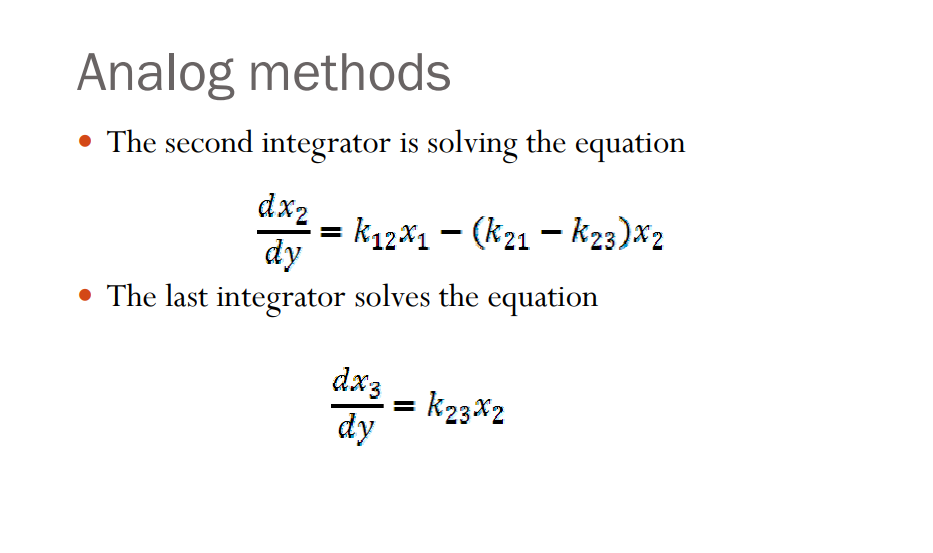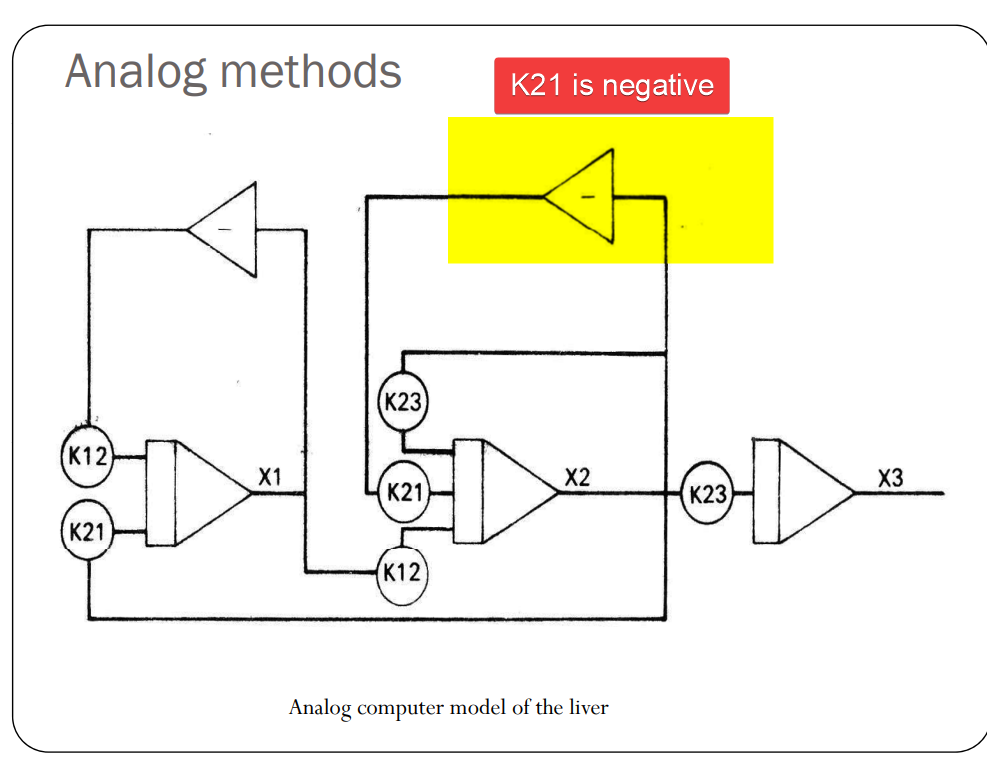What's the confusion:
Confusion is to how to model the equations. What signs to use for incoming and outgoing components in a process flow. The confusion isn't mainly for how to translate the equations to a amplifier-figure(although I learnt a lot from the previous answer), it's mainly how to convert that first block diagram I've mentioned to equations. And it's only the second equations that I'm confused of signs positive or negative.
My thoughts about sign what they should be:
If the arrows are coming towards the block in consideration, add + sign else add - sign.
For example: consider c1 (c1 in the book is labeled x1 in the slide) block, then we find x1', for that **+ will be what comes towards it i.e $$K_{21}*x_2$$, and - will be what goes outside i.e. $$K_{12}*x_1$$.
I really don't know why, because it's probably related to medical sciences. But I don't need to understand it as far as I know.
So, $$ x_1'=K_{21}*x_2-K_{12}*x_1$$
So according to this logic, for x2', this'd be the equation-:
$$x_2'=K_{12}*x_1-K_{21}*x_2-K_{23} *x_2$$
This is the notation being used.
How to translate compartmentalized liver to analog computer? I just want to learn to translate the figure to equations.
This is the question:
International source:
The compartmental analysis figure is the diagram that I want to translate to differential equations and eventually analog computer.
This is from mathematical models in the health sciences book by Eugene Ackerman.
I don’t know about the author, but I bet that this is extremely reliable compared to the materials locally available and written by local authors. But it doesn't tell which equation it is modeling, so I am not 100 % sure about it. But to be honest, I don't clearly understand its conventions and it's age old book which is un-updated, so relying on it would be a mistake.
It has problems as well:
It doesn't use negative for $$K_{12}$$ And idk why is it using negative for $$K_{23}$$.
Less reputed source:
This is pretty ambiguous, their equation and figure don't even match.
If $K_{21}$ is negative then $$K_{23}$$ should also be negative(although it doesn't writes that in its equation.
I can guess that it's trying to subtract the net output instead of doing it individually, but I'm not sure why it's doing it.
Highly reputed source (LOCAL):
If this source is correct, I don't understand how is it correct?
My thoughts about sign what they should be:
If the arrows are coming towards the block in consideration, add + sign else add - sign.
For example: consider c1 (c1 in the book is labeled x1 in the slide) block, then we find x1', for that **+ will be what comes towards it i.e $$K_{21}*x_2$$, and - will be what goes outside i.e. $$K_{12}*x_1$$.
I really don't know why, because it's probably related to medical sciences. But I don't need to understand it as far as I know.
So, $$ x_1'=K_{21}*x_2-K_{12}*x_1$$
So according to this logic, for x2', this'd be the equation:
$$x_2'=K_{12}*x_1-K_{21}*x_2-K_{23} *x_2$$
My teacher (he is not the one to check the final papers):
He says "some books have written plus in $$K_{21}$$ while some minus I am not sure what it is actually."
We don't know who will check the paper or who checked it.










